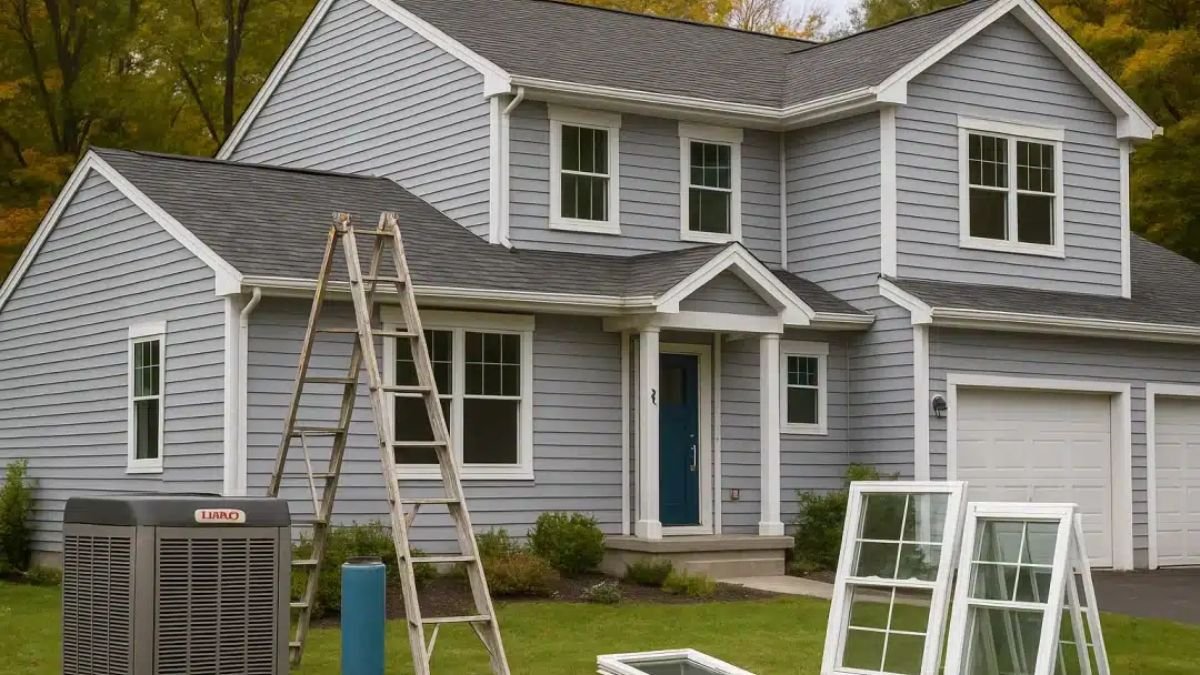A large number of benefits in the form of tax credits are being offered to homeowners for installing and improving energy-efficient equipment or switching to clean energy through government schemes. These programs will remain active until December 31, 2025, with possible extended coverage under the Inflation Reduction Act. Under this scheme, families can claim tax credits of up to $3,200 per year, based on qualifying expenses of around 30%.
These home energy efficiency upgrades include insulation, windows, new HVAC systems, and standalone energy projects such as solar panels, geothermal systems, and battery storage. This not only reduces project costs over time but also lowers long-term energy bills for homeowners.
Credits are claimed through the IRS using Form 5695 (Residential Energy Credits) when filing annual taxes. With the deadline approaching rapidly, now is the perfect time for eligible homeowners to take advantage of these incentives.
Energy-Efficient Home Improvement Credits
The Energy Efficient Home Improvement Credit allows homeowners to receive a tax credit for specific projects. These projects cover up to 30% of eligible expenses, with annual limits depending on the type of improvement. Unlike previous programs that had lifetime limits, this credit can be claimed every year until 2025.
Homeowners can claim up to $1,200 per year for improvements such as insulation, windows, doors, furnaces, or central heating and air conditioning systems. For advanced systems such as heat pumps, biomass stoves, or heat pump water heaters, the credit limit is $2,000 annually. By combining these categories, homeowners can receive a maximum of $3,200 in credits per year.
Annual Credit Breakdown
Upgrade Category: Heat Pumps, Heat Pump Water Heaters, Biomass Stoves
Maximum Credit: $2,000
Percentage of Cost Covered: 30%
Upgrade Category: Insulation, Windows, Doors, Furnaces, Central Air Conditioners
Maximum Credit: $1,200
Percentage of Cost Covered: 30%
This structure allows homeowners to either spread projects over multiple years or complete them all in a single year based on financial planning and energy needs.
Residential Clean Energy Credit
The Residential Clean Energy Credit covers larger renewable energy projects with no fixed dollar cap for most systems. Eligible homeowners can claim 30% of expenses for solar panels, solar water heaters, geothermal heat pumps, wind energy systems, and standalone battery storage units.
This credit applies to both newly built and existing homes, provided the installations are completed before December 31, 2025. Unlike the Energy Efficient Home Improvement Credit, the Clean Energy Credit scales directly with project costs, making it especially beneficial for homeowners investing in solar or geothermal systems.
Qualified Renewable Energy Installations
- Solar photovoltaic systems
- Solar water heating systems
- Geothermal heat pumps
- Small-scale wind turbines
- Standalone battery storage
These technologies offer immediate tax benefits and provide ongoing relief from rising utility bills, helping homeowners reduce long-term energy costs.
Potential Household Savings
The total tax benefit depends on the combination of improvements a homeowner completes in a given year. For example, a homeowner spending $8,000 on a heat pump would normally expect a $2,400 credit, but due to the annual cap, only $2,000 can be claimed. If the same homeowner spends $4,000 on new windows, they could claim an additional $1,200, reaching the maximum annual savings of $3,200.
Example of Combined Savings
Type of Upgrade: Heat Pump Installation
Project Cost: $8,000
Credit Percentage: 30% ($2,400)
Credit Claimed: $2,000
Type of Upgrade: Window Replacement
Project Cost: $4,000
Credit Percentage: 30% ($1,200)
Credit Claimed: $1,200
Total Savings: $3,200
When combined with state-level programs or utility rebates, overall savings can be even more significant. Many states provide additional credits for similar projects, allowing homeowners to save thousands more when stacking federal and local incentives.
How to Claim the Credits
Homeowners interested in claiming these incentives must file IRS Form 5695 with their federal income tax return. The form includes sections for both the Energy Efficient Home Improvement Credit and the Residential Clean Energy Credit.
It is important to retain all invoices, receipts, and manufacturer certifications to prove that products meet efficiency standards. Claims without proper documentation may be delayed or denied. These incentives are nonrefundable credits—they reduce tax liability but do not generate refunds beyond the owed amount. For Clean Energy Credits, any unused portion may be carried forward to the next tax year.
Importance of Acting Now
The December 31, 2025 deadline creates a limited window for homeowners to maximize these benefits. After this date, the program structure may change or expire entirely. By planning projects strategically, homeowners can spread costs across multiple years to reach the annual cap and fully utilize available credits.
Energy-efficient and clean energy improvements not only provide tax savings but also enhance property value, making them a long-term investment. With energy costs rising nationwide, these projects offer measurable financial relief while supporting the transition to cleaner energy.
FAQs
Q1. Who is eligible for the $3,200 energy tax credit?
A. Homeowners who install energy-efficient improvements or clean energy systems before December 31, 2025.
Q2. What upgrades qualify for these federal tax credits?
A. Projects like insulation, windows, HVAC systems, solar panels, geothermal systems, and battery storage qualify.
Q3. How can homeowners claim these credits?
A. By filing IRS Form 5695 with their annual tax return and keeping all receipts and certification documents.
